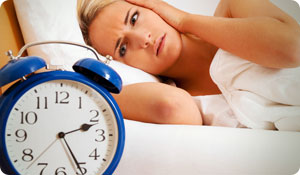
If you're having trouble falling asleep at your normal bedtime every night, sleeping through the night, and waking up when you need to every morning, you may need to reset your inner clock.
Your circadian rhythm is the internal biological clock that helps you fall asleep in darkness and wake up to sunlight, in a constant pattern that repeats itself every 24 hours. It is no coincidence that circadian rhythms coincide with the Earth's rotation.
When your circadian rhythm is functioning without interruption, you are able to fall asleep pretty much at the same time every night, sleep through the night, and wake up at the same time every morning. At the same time, you will also be able to adjust relatively quickly to time changes that require changes in your sleep/wake patterns.
If there is a problem with your circadian rhythm, you may not be able to adjust to time changes easily. Although your inner clock can adjust to changes in your schedule or time zone, it takes time to develop a new rhythm. Until your body clock resets itself, you may suffer from sleep disruption at night and fatigue during the day. In fact, if you've ever experienced jet lag, even for just a day or two, you know exactly how it feels when your circadian rhythm is out of sync.
There are two loosely defined and often overlapping categories of circadian rhythm disorders, according to the American Academy of Sleep Medicine. One includes jet lag and shift work, and they are grouped together because, in each case, the problem comes from outside of your internal circadian system. In other words, the problem is due to environmental changes, rather than biological. The other category of circadian disorders includes primary sleep disorders, such as delayed sleep phase disorder, that may result from a malfunction of your internal clock.
If you think your internal rhythms are out of whack, speak to your doctor. Several assessment methods and treatments are available for circadian rhythm disorders, depending on the nature of the problem. Some of these techniques include maintaining a sleep journal at home, overnight sleep studies held in sleep clinics, planned napping, scheduled light exposure and restriction, and medications that promote sleep and adjust the circadian rhythm in various ways.
Sources:
Morgenthaler, T., et al; "Practice Parameters for the Clinical Evaluation and Treatment of Circadian Rhythm Sleep Disorders." SLEEP 2007 Nov 1;30(11):1445-1459. Web. 18 Mar 2011.
http://www.ncbi.nlm.nih.gov/pmc/articles/PMC2082098/
Sack, RL, et al.; "Circadian Rhythm Sleep Disorders: Part 1, Basic Principles, Shift Work and Jet Lag Disorders." SLEEP 200;30(11):1460-1483. Web. 18 Mar 2011. http://faculty.washington.edu/vitiello/Recent%20Publications/AASM%20CRSD%20I.pdf
The University of Utah Genetic Science Learning Center: The Time of Our Lives. 2011. Web. 18 Mar 2011.
http://learn.genetics.utah.edu/content/begin/dna/clockgenes/





